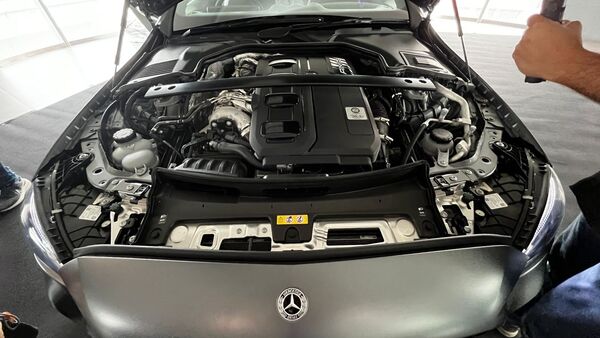How to flush your car radiator: Tips to do it at home
- If your car has been running for a long time, it may require a radiator flush, which will ensure a healthy engine cooling system.


Any car comes with a wide range of intricate components and for a smooth functioning of the entire vehicle's system, all these parts need to work in unison. While the entire car needs periodical maintenance service, each part of the vehicle also requires servicing separately, which ensures proper and smooth functioning of the intricate components. While many of these maintenance works need professional technicians, some can be done at home by anyone, even if he or she doesn't have any detailed technical knowledge about the car.
One of the key components of the internal combustion engine-powered vehicles is the radiator. It plays a critical role in the engine's cooling system. A radiator cools the car's engine so it works correctly. The radiator circulates coolant through its tube system which is then cooled by surrounding air. Without a radiator, a car engine would be susceptible to overheating, which may create problems for the entire propulsion system. Hence, to keep the car from getting too hot, you must flush the radiator periodically.
Also check these Vehicles
If a car is running for a long time, it may require a radiator flush, which is also known as a coolant flush. Flushing of the radiator can be performed at home. Here's a step-by-step guide explaining how to flush a radiator.
Determine if the car radiator needs a flush
The timing of the car radiator flush depends on a couple of factors. Different car models can hold different volumes of coolant. You should know how much coolant your car can hold in the coolant reservoir. Also, the time the car has been running without a coolant flush determines if it requires a radiator flush. It is recommended that a car radiator should be flushed after running every 50,000 kilometres. Also, check your car's owner's manual to determine when to flush its radiator. Apart from that, if the car is leaking coolant, the engine bay is smelling of burning coolant, if the coolant colour has been changed or the engine is getting overheated, these are possible signs telling you to change the coolant.
Let the engine cool down
Once you have determined to flush the radiator, park the car with the parking brake on and turn off the engine. Check if the engine is hot or cold by carefully placing your hand on the engine block. If the engine is hot, then let it cool down. Also, check the coolant temperature on your instrument cluster.
Drain the old coolant
As soon as the engine and coolant have been cooled, look under the car to find the radiator drain petcock. It is usually located in the corner of the bottom of the radiator. Take a pan and position it directly under the petcock. Remove the petcock and let the old coolant drain into the pan. When draining is finished, close the petcock tightly. It is recommended to wear protective gloves, eyewear and clothing while draining the coolant.
Locate the coolant reservoir cap
After opening the hood of the engine block, check for a flat and finned round metal cap located near the front of the car. It sits on the top of the radiator. The cap may say radiator coolant or something similar on it. Locating this will help you to pour water and coolant.
Pour distilled water and cleaner
Pour distilled water into the radiator through the coolant reservoir cap. The distilled water comes sans salts and minerals. Hence, it will not harm the cooling system. Never put tap water in the radiator as the impurities in it could damage the cooling system. Add a radiator cleaner of your choice with the water. Make sure to check the car's manual to determine what type of radiator cleaner should be used.
Close the cap and start engine
Once the distilled water and radiator cleaner have been poured into the reservoir, close the radiator cap and start the engine. Let the engine run for around 15 minutes, which will ensure the water and the cleaner move through the cooling system and wash away debris.
Let the engine cool down and drain water
After 15 minutes of running the engine, turn off the ignition and wait for the system to cool down. Again place the pan under the same petcock at the bottom of the radiator and drain the water and cleaner mixture. You can start and keep the engine running for a while to push the remaining water out into the pan. Once all the water is out, close the petcock.
Add fresh coolant
With the coolant system purged, add fresh coolant to the radiator. Most cars take a 50-50 mixture of coolant and antifreeze, which can be purchased online or in automotive stores. Always check the owner's manual to know the right coolant and the right mixture. Once done, close the cap tightly.
Start engine and let coolant run through system
Once the radiator has been properly flushed and the new coolant added, turn on the engine so it can run through the system. Let the engine run for a few minutes and check if the temperature gauge is fine.
Determine if the car radiator needs a flush
Let the engine cool down
Drain the old coolant
Locate coolant reservoir cap
Pour distilled water and coolant
Close the cap and start engine
Let the engine cool down and drain water
Add fresh coolant to the system
Start engine and let coolant run through system








 40 kWh
40 kWh 150 Km
150 Km
 3996.0 cc
3996.0 cc Petrol
Petrol


















